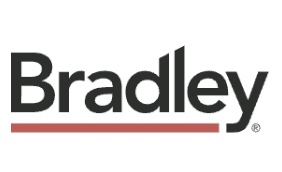Social equity is an important part of any forward-thinking cannabis regime. Some states do it better than others, and not all social equity policies are equal – but any state wishing to move forward with a robust program that benefits all of its citizens must be mindful of the advantages of including social equity policies and diligent in seeing those policies through.
Alabama’s Medical Cannabis Social Equity Policy
Alabama is no exception, and Alabama’s medical cannabis program contains a social equity component. Specifically, Alabama provides by statute that the Alabama Medical Cannabis Commission “shall ensure” that a fifth of all integrated facility licenses and a fourth of all other licenses:
are awarded to business entities at least 51 percent of which are owned by members of a minority group or, in the case of a corporation, at least 51 percent of the shares of the corporation are owned by members of a minority group, and are managed and controlled by members of a minority group in its daily operations.
For purposes of this requirement, “minority group” means individuals of African American, Native American, Asian, or Hispanic descent.
Reasonable people can disagree about whether a fifth or a fourth of licenses is sufficient to accomplish the goal of meaningful social equity, or whether the Alabama Legislature’s approach to social equity is an appropriate framework. Those are important questions that need to be answered, but they are beyond the scope of this post, as this post focuses on a more immediate (not more important) potential consequence of the social equity regime set out by the Alabama Legislature.
Specifically, what happens if an insufficient number of minority applicants submit applications such that the commission is unable to award the full number of available licenses? Similarly, what happens if a sufficient number of these applications are submitted but not all satisfy the criteria required for licensure?
This is not merely a thought exercise or a hypothetical. As just one example, we know that the commission is authorized to award up to 12 cultivation licenses. We also know that there were 12 applications for cultivation licenses submitted by the December 30, 2022, deadline. At first blush, this seems like great news for the cultivation applicants – everyone who applied gets one, right? But what if only two “minority groups” submit a qualifying application for cultivation? Under the plain text of the statute, one could credibly argue that no more than eight cultivation licenses may be awarded. Any more than that would mean that minority groups were not awarded a fourth of the cultivation licenses. By that logic, what if only one “minority group” submits a qualifying application for cultivation? Or what if none do so? In the latter case, one could argue that no cultivation licenses may be awarded by the commission because even if only one non-minority license is awarded without any awarded to a “minority group,” then “minority groups” would not represent a fourth of cultivation licenses awarded.
The same issue applies for all types of licenses. For example, the AMCC received only three applications for testing laboratories. If none of those are “minority groups,” then the same scenario applies.
So, What Now?
A threshold question is whether the scenarios described above are problems that need to be fixed. On the one hand, you may argue that the intent of the Legislature was not to allow non-minority participation in the medical cannabis program if minority participation is not included. You may also argue that if, for example, less than 12 cultivation licenses were awarded that would not present a problem because the integrated facility licensees could cultivate sufficient product to serve the patient base, at least initially.
On the other hand, you may argue that, for example, awarding zero cultivation licenses, or even one cultivation license, runs contrary to the intent of the Legislature to award numerous cultivation licenses. And you may argue that abrogating even more control over the supply chain to integrated facility licensees similarly runs contrary to the Legislature’s intent to promote independent cultivators.
Let’s assume, for the sake of argument and to avoid ending this post abruptly, that the scenario above presents a problem that requires a solution (after all, if there is not a problem then a solution is not required). What are the possible fixes?
As an initial matter, I do not believe there is any fix to the percentage requirement that does not include legislative action. The requirement of one-fifth or one-fourth minority participation is a statutory requirement, and I do not believe the AMCC has the legal authority to award licenses in a manner inconsistent with that requirement.
So, what if the Legislature wished to make a change to the requirement? First, I have the sense that removing the social equity provision of the law would be a challenge in the Legislature because it would be seen by many as benefiting non-minorities at the expense of minorities. Second, any legislative change during the pending application process could lead to lawsuits from pending applicants. For example, would an integrated facility applicant have a valid claim that changing the rule midstream to allow more cultivation licensees violates the integrated facility applicant’s rights because it would make the license less valuable if there were more cultivators competing in the space?
But perhaps there is something the AMCC could do – namely, re-opening certain application periods to encourage more applications by minority owned and operated businesses. That presents its own, separate issues. For example, if the AMCC re-opened the cultivation period during the current application window, the AMCC would face the same potential legal challenges that the Legislature would face by changing the rules in the middle of the game. But what if the AMCC waited until the initial application window closes this summer and then immediately re-opened certain application periods for specific license types where the social equity provision limited the number of licensees to a level below which the AMCC believed was beneficial to the medical cannabis program and expeditiously awarded more licenses consistent with the law? While the latter proposal assumes that more minority businesses would apply during the new window, I believe it would be the most effective way for the AMCC to both comply with the legislative requirements and also ensure that a sufficient number of licenses are awarded for each category.
These are complicated questions that raise serious implications about the goals of both social equity and the robustness and success of Alabama’s medical cannabis program. But they are important questions, worthy of discussion at the highest levels of Alabama’s government. While it’s not my nature to be an optimist, I am optimistic that the AMCC will take all necessary steps to ensure that both goals are accomplished in due time.
Source: https://www.buddingtrendsblog.com/2023/03/the-short-term-consequences-of-alabamas-cannabis-social-equity-policy/

































